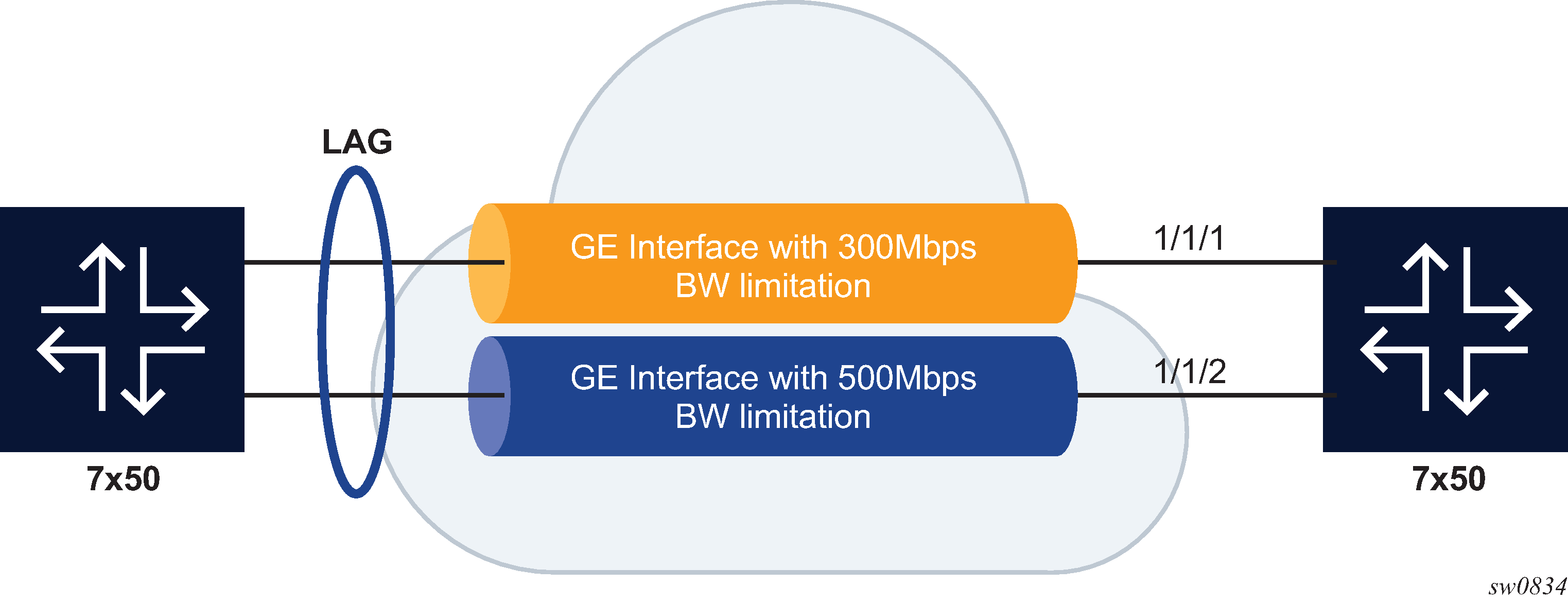The user can use the LAG port hash-weight to further control the flow distribution between LAG ports.
This capability can be especially useful when LAG links on Nokia routers are rate limited by a 3rd party user providing the connectivity between two sites as shown in the Figure: Same speed LAG with ports of different hash-weight:
LAG links 1/1/1 and 1/1/2 are GE
LAG link 1/1/1 is rate limited to 300 Mb/s by a 3rd party transport operator
LAG Link 1/1/2 is rate limited to 500 Mb/s by a 3rd party transport operator

In this context, the user can configure the LAG to adapt the flow distribution between LAG ports according to the bandwidth restrictions on each port using customized hash-weight values as shown in the following configuration example:
A:Dut-A>config>lag# info
----------------------------------------------
port 1/1/1 hash-weight 300
port 1/1/2 hash-weight 500
no shutdown
----------------------------------------------
The user can also display the resulting flow-distribution between active LAG ports using the following show command:
A:Dut-A# show lag 3 flow-distribution
===============================================================================
Distribution of allocated flows
===============================================================================
Port Bandwidth (Gbps) Hash-weight Flow-share (%)
-------------------------------------------------------------------------------
1/1/1 10.000 300 37.50
1/1/2 10.000 500 62.50
-------------------------------------------------------------------------------
Total operational bandwidth: 20.000
===============================================================================
-
If all ports have a hash-weight configured other than port-speed, then the configured value is used and normalized to modify the hashing between LAG ports.
-
If the LAG ports are all configured to port-speed, or if only some of the ports have a customized hash-weight value, then the system uses a hash weight of 1 for every port in case of same-speed LAG. For mixed-speed LAG, the system uses the port-speed value.